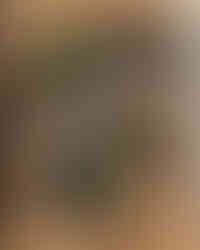Alright folks, I am SKIPPING some major steps to the process of creating a stained glass piece; however, I plan to go into those details in another post! I mostly wanted to show some late in the game progress pics. Below you will see a series of 4 photos of the same monstera leaf throughout the process.
Picture 1 shows the the dirtied up pieces fitting together after being smoothed out with a glass grinder. (This of course skips the entire beginning process of: create design, number design, cut out design on paper, pick your glass colors, cut and score each piece and keep your fingers crossed the glass doesn't break in a random direction, etc etc). I adore my Inland WizCG grinder. Thank you to whoever put theirs up for sale on Ebay 10+ years ago! It is being loved and cared for.
Picture 2 shows the leaf after copper foil has been meticulously wrapped around each piece. It is important to get the foil as similar as you can in thickness on all sides, including front and back. Copper foil comes with different backing shades: black, silver, and copper. The backing color of copper foil you choose will depend on what color patina you want your final piece to be. I chose black backed copper foil and used black patina for the final look. Copper foil is what the solder is going to attach to, holding the pieces of glass together.
Picture 3 shows the leaf after solder has been applied. These individual pieces aren't going anywhere now! Most stained glass artists use 60/40 solder - 60% tin and 40% lead. Because lead is used, it is recommended to handle your stained glass infrequently and wash your hands afterwards. A flux gel/paste/liquid is applied to the copper foil, allowing the solder to flow smoothly using our soldering iron. I use the Hakko FX-601 and it is a GAME CHANGER. Creating smooth lines with solder takes a lot of patience and practice, but this Hakko soldering iron sure did help! I've also tried multiple types of flux. I'm currently using Classic 100 Gel Flux and liking it better than the paste I previously used.
Picture 4 is the finished look. I've given my leaf a nice soapy Dawn bath, scrubbed the life out of it with a magic eraser (or steel wool), applied black patina to the silver solder lines, and polished the life out of it again. Making glass look clean and shiny takes a lot of elbow grease! Seeing the finished product makes it all worth it.
Thank you for reading! I hope you have enjoyed learning a bit about the stained glass process. Please check out my reels on Instragram (ellowee_art) if you'd like to see videos of how these processes work.








Comentários